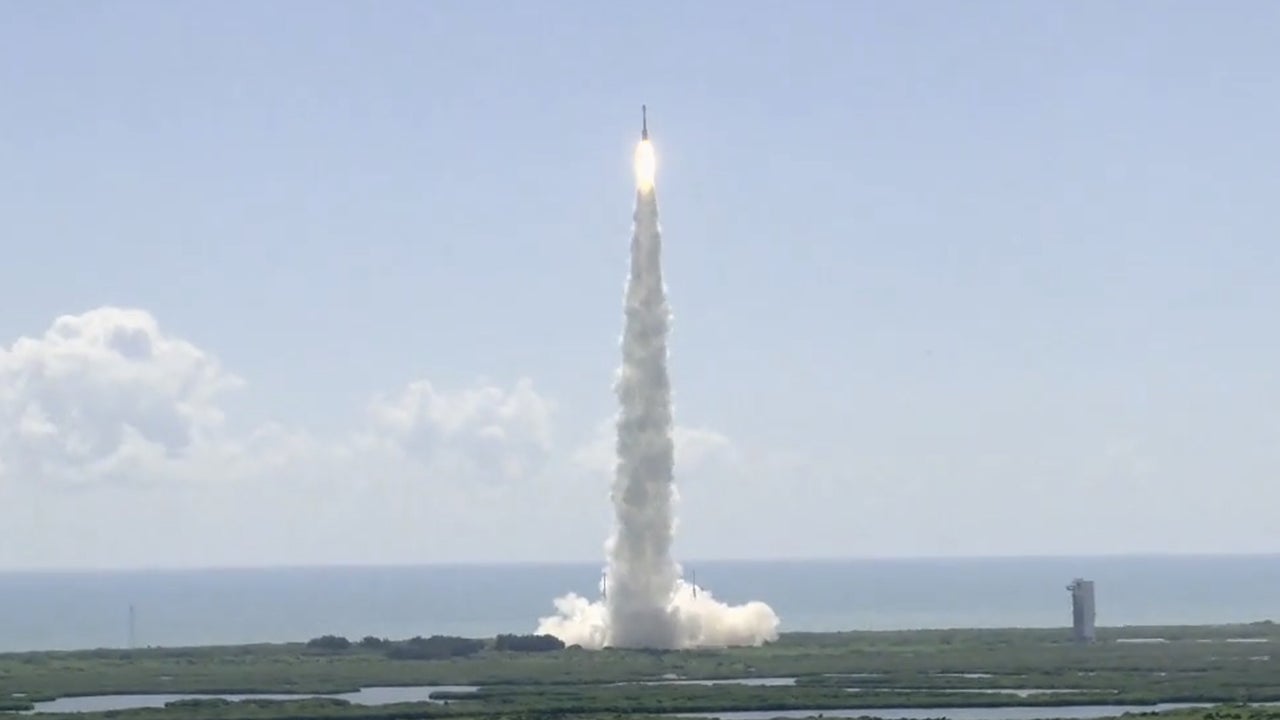NASA and Boeing have successfully completed the first crewed launch of the next-generation Starliner spacecraft, which is now en route to the International Space Station with a complement of two veteran astronauts. Assuming that the test flight goes to plan, Starliner will join SpaceX’s Crew Dragon in regularly ferrying astronauts between the ISS and Earth, and will become just the sixth American-made spacecraft in history to be certified to carry human beings into orbit.
Starliner lifted off from Cape Canaveral Space Force Station in Florida at 10:52 a.m. EDT on May 6 atop a United Launch Alliance Atlas V rocket, bound for low-Earth orbit on a crewed mission that has been well over a decade in the making. The test flight will see NASA astronauts Suni Williams and Butch Wilmore rendezvous with the ISS for a week-long tour before returning to Earth to land on U.S. soil next week. The mission is designed to put the spacecraft through its paces as a final test ahead of being fully certified by NASA to fly astronauts to low-Earth orbit.
During today's launch, the Atlas V’s dual first stage engines and solid state boosters worked in concert to push both launcher and spacecraft up through the densest section of Earth’s atmosphere. The ULA rocket’s first stage then performed a planned separation 4 minutes and 38 seconds into the mission, leaving the Centaur’s upper stage to continue onwards.
Starliner to the stars! ✨
— NASA (@NASA) June 5, 2024
At 10:52am ET, @BoeingSpace #Starliner lifted off on a @ULALaunch Atlas V for the first time with @NASA_Astronauts aboard. This Crew Flight Test aims to certify the spacecraft for routine space travel to and from the @Space_Station. pic.twitter.com/WDQKOrE5B6
A mere 12 minutes into the mission, Centaur's engines shut off, having successfully pushed Starliner into its initial orbit. Three minutes after that, the Atlas V upper stage was jettisoned, leaving Starliner free to navigate to the ISS under the power of its service module.
The crew will spend the next 24 hours undergoing a series of engine burns to catch up to the ISS before finally docking with the orbital outpost’s Harmony module at 12:15 p.m. ET on Thursday. They will then spend around a week aboard the ISS before departing for a six-hour return journey to Earth. This stage of the mission will test Starliner’s atmospheric re-entry capabilities and heat shield as it slows from an orbital velocity of 17,500 miles per hour to a mere walking speed, before gently touching down in the Western U.S. under deployed parachutes.
Starliner is one of two spacecraft — along with SpaceX’s Crew Dragon — that were tapped by NASA to bring crewed launch capabilities back to American soil in 2014 as part of the agency’s Commercial Crew Program. One of the driving forces behind the partnerships is to provide multiple ways for the U.S. to transport astronauts between the ISS and Earth, thus ending the country’s reliance on the Russian-made Soyuz spacecraft, which had been the sole method of reaching the orbital outpost following the retirement of the space shuttle in 2011.
However, before either could be rated for human use, both Boeing and SpaceX had to complete a gauntlet of trials to prove that their spacecraft could be relied upon. NASA had initially hoped to have both spacecraft certified for crewed launches by 2017. However, a slew of development difficulties led to both SpaceX and Boeing missing the ambitious target by a number of years.
SpaceX’s Crew Dragon was eventually certified for human use in November 2020. Since then, the spacecraft has completed 13 crewed missions to the ISS. During that four-year period, Starliner completed a series of uncrewed test flights that encountered a number of significant technical issues, which have combined to further delay the spacecraft's certification.
Whilst the ISS remains a key part of NASA’s scientific ambitions, the agency and its commercial partners are also developing a range of new technologies and spacecraft designed to extend human spaceflight to the moon and, eventually, Mars. For more on that, read up on NASA's timeline for its ambitious Artemis program, or find out about how future explorers could be at risk of Moonquakes and landslides while exploring the lunar surface.
Image credit: NASA, Boeing.
Anthony is a freelance contributor covering science and video gaming news for IGN. He has over eight years experience of covering breaking developments in multiple scientific fields and absolutely no time for your shenanigans. Follow him on Twitter @BeardConGamer




